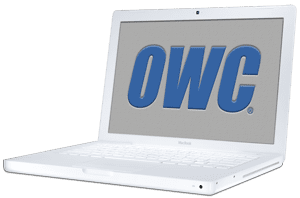 Matt S., – A satisfied customer from Tampa, FL.
Matt S., – A satisfied customer from Tampa, FL.
It wasn’t that long ago that I purchased my MacBook. It was October of 2007, shortly after my G3 iBook adamantly declared it would do no more complicated tasks. Accomplishing anything on that iBook had become a chore, and the faulty soldering job on the GPU didn’t help either. I had to bite the bullet and get a new Mac. It was time. Apple had recently transitioned from the PowerPC CPUs to Intel, Mac OS X 10.5 had just come out, and my poor little iBook just wasn’t able to cope with what Apple had coming down the way. I bid a fond farewell to my first-ever Apple purchase and stored it away somewhere.
Now, here is a very obvious statement about Macs: they’re expensive. You can either believe or disbelieve the hype about the Apple Tax, price-gouging, paying for a brand label, but any Apple product is a significant purchase in terms of cost and value. As a married man with a wife in college and one reasonably modest income, I had to aim low. I went for the bottom of the barrel MacBook. Was that a bad thing?
The iBook had an 800MHz G3 processor. The MacBook had a 2GHz Intel Core 2 Duo. The iBook had 256MB of RAM with a maximum capacity of 512MB, while the MacBook started at 1GB. And the size of the hard disk doubled from 40GB (which was consumed by OS X 10.3 and Classic 9 on the iBook) to 80GB on the MacBook. I was definitely trading up, even if I was going for a low-end model.
And I was impressed with my purchase. Everything ran smoothly. I was running programs that my old iBook just didn’t have the resources to handle. And I knew I would be able to handle the new OS update that was bound to come out within the next year or so. I was quite content with the new Mac, though I did sometimes try to overly justify the $1,000 price point.
Let’s fast forward three years. It’s October, 2010. The MacBook that once blazed at lightning speeds is getting slower. System upgrades, software updates and a general need to do more in less time is forcing the low-end MacBook to show its age. Let’s face it, three years is a long time in computer years. Something had to be done. Was I ready to make another big purchase? Was that my only option?
No.
Somehow, I’m not sure through which site or by which friend, I ended up on macsales.com. I had honestly never considered upgrading my MacBook. I had helped my friend replace the hard disk on his G4 years ago and that was enough to put it out of my mind. (Look it up. It’s an ordeal.) The more I looked through the site, the more I realized upgrading might be a viable option. I determined what I needed first and foremost was a new hard drive. I started sorting through the available upgrade packages and was thoroughly impressed. I think what really grabbed my attention was the toolkit. I remember my friend’s hard disk upgrade and how we tried to hunt down every little screwdriver or the elusive plastic pry bar, and here was OWC including them in this kit! Though, I thought this might be too much of an adventure.
Then I saw a link. “Instructional Video” or something similar. I remember thinking “how badly do they want me to upgrade?” Well, enough to provide instructions on how to get the necessary components within my MacBook. Once I saw what had to be done first hand the intimidating factor was no longer a factor at all. (To Apple’s credit, they had refined the process for replacing a hard disk since my last experience.) I found a new hard drive, a 500GB 7200 RPM Hitachi, with the toolkit and an external enclosure, and clicked add to cart. In three to five days, I would have my new hard drive. All was well.
Or was it? Sure, I’d have the storage space, but the MacBook was still going to be as under-powered as it was with the old disk. I weighed my options, transferred some money from my savings account (not nearly as much as I had intended before discovering OWC) and made a second order. RAM. As much RAM as I could fit in this thing. And that was easy to figure out, since OWC had a guide already set up to tell me how much RAM that was. Another click of that lovely “add to cart” button and I anxiously waited for the components to arrive.
Arrive they did, and everything came exactly as promised. I opened up the largest package first. There was the new hard disk, enclosure, and toolkit. I popped the new drive into the enclosure, plugged it in, formatted it, and commenced a two-hour cloning of my original drive. That was by far the longest part. Thanks to the instructional video, I was well-prepared for the upgrade. The new hard disk and the additional RAM had been installed in under five minutes. Then came the big test.
I was a bit confused when the Apple logo took about thirty seconds to display on the boot screen. Typically it took no more than five. Then I would sit at that screen for ten seconds or so, then a blue screen for another five to ten, then my desktop with no icons while it connected to my router and loaded all of my plug-ins. When that Apple logo loaded after thirty seconds things looked grim.
And then I saw it. After only a few brief seconds, my desktop, not just my wallpaper, but my entire desktop, system bar, folders, network drives, all of them had loaded. This was incredible. Yes, the Apple logo took longer to display, but the boot time itself seemed to be easily cut in half. Of course, I had to test the upgrades as thoroughly as possible. I clicked on the Finder icon.
There was no thinking. There was no “whir” of the hard disk or grinding of the CPU. There was just my Finder window. I started navigating through folders like crazy. The Preview tool was actually functional again. I had to keep testing. Safari? Loaded immediately. Mail? All five IMAP accounts pulled mail within five seconds. Pages? One hop in the dock and it was running. Photoshop? The application that just the day before took almost two minutes to load?
Four seconds.
I honestly wasn’t sure what to do, especially now that I would clearly have the time to get things done. What I did do was thank whomever it was that led me to OWC in the first place. I didn’t feel like I had upgraded my Mac. I felt like I had a new Mac, right out of the box. It was running like a dream, with over six times the original storage capacity and four times the original memory.
Apple’s low-end MacBook, as of this writing, has a 2.4GHz Core 2 Duo, 2GB of RAM and a 250GB disk, for $999.
Thanks to OWC, I have a 2.0GHz Core 2 Duo, 4GB of RAM and a 500GB disk, for a hair over $200.
I could have spent five times that amount on a new MacBook and it still wouldn’t compare to what OWC was offering. I work with a lot of computer geeks, and I constantly hear them say, “I need a new computer.” Well, I have a new computer, cheaper than any I could have bought anywhere else, and I got it from OWC on macsales.com. And when the new purchase becomes inevitable another three years down the road, I’m going to buy whatever low-end MacBook Apple has for sale. And then I’m going to go right to OWC, and I’m going to make that low-end MacBook the high-end performance machine I know it can be.
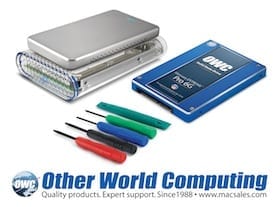
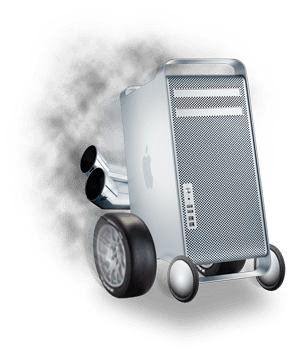

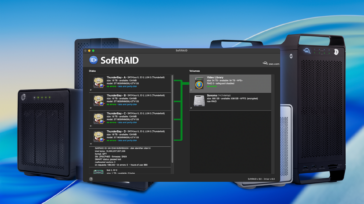
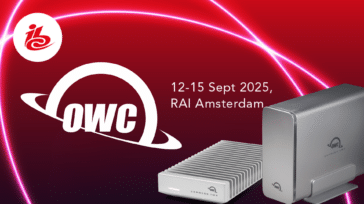
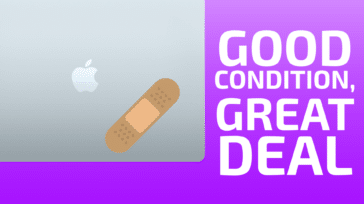


Matt,
When the MacBook is powered-on all of the RAM has to be counted and checked before the software boot process can begin. It takes longer for the Apple logo to show up now since it has 3GB more RAM to cycle through.
Chris
OWC is the only company that I will use to purchase Mac components. After screwing up twice by purchasing memory and a HDD for my Macs from a big box store, I finally learned my lesson. Upped the memory in my Core Duo Mac Mini and developed kernel panics. Installed a larger HDD in my MacBook Pro and developed unexplained freezes, and eventually kernel panics which pointed to the HDD. The memory and HDD purchased from OWC resolved both of my issues and I am now experiencing faster performance from both computers. OWC is the Mac specialist that I can trust for 100% compatibility.
My experience was the same awhile back when I upgraded my MacBook Pro drive. OWC made the whole process pretty painless, although in my case the external enclosure never worked properly. It’s gathering dust somewhere.
Good to hear you had a similar experience as Matt. But Tom, why let that enclosure gather dust? If still under warranty, we’ll replace it!
I should really read things two or three times before I post. I think I sound contradictory to Chris S’ claim that there was a net decrease. I was thinking of a “decrease in boot time” in the wrong context. I interpreted it, for whatever reason, as a “decrease in boot -performance”, which is genuinely not the case.
Actually, overall there is an increase. Once it got to the wallpaper prior to the upgrade I was never sure how long it would take. It would take about 30 seconds just to get to the wallpaper, but nothing else. Once the logo displays, its only on for a second or two before everything’s loaded.
Matt,
When the MacBook is powered-on all of the RAM has to be counted and checked before the software boot process can begin. It takes longer for the Apple logo to show up now since it has 3GB more RAM to cycle through.
Chris
That’s actually a very good point. The startup RAM tests can affect how your machine starts up.
However, the performance boost from having more RAM generally offsets the minor delay at the beginning of the startup process. From the description above, it seems that—even with the delay—there was a net decrease in overall boot time.